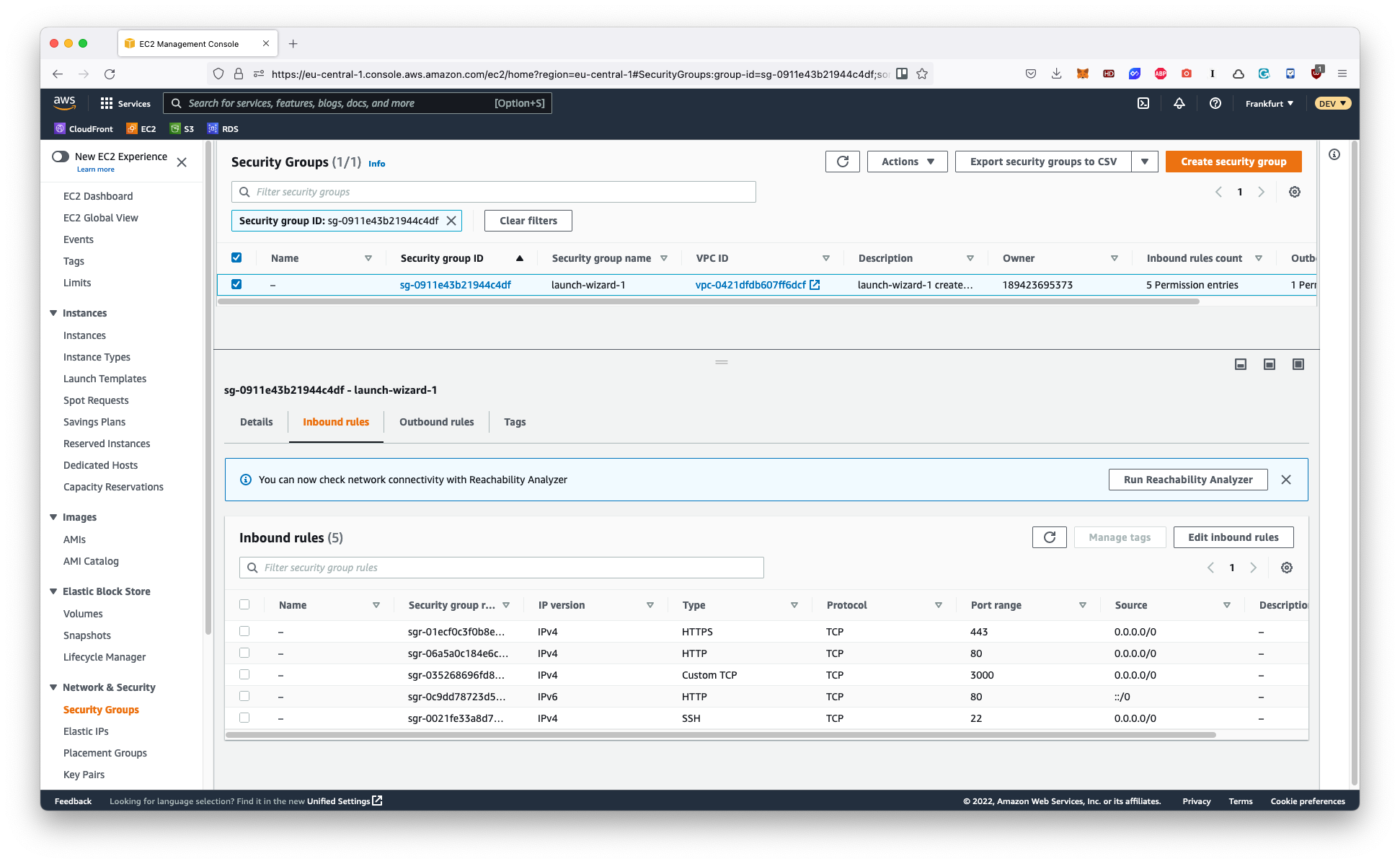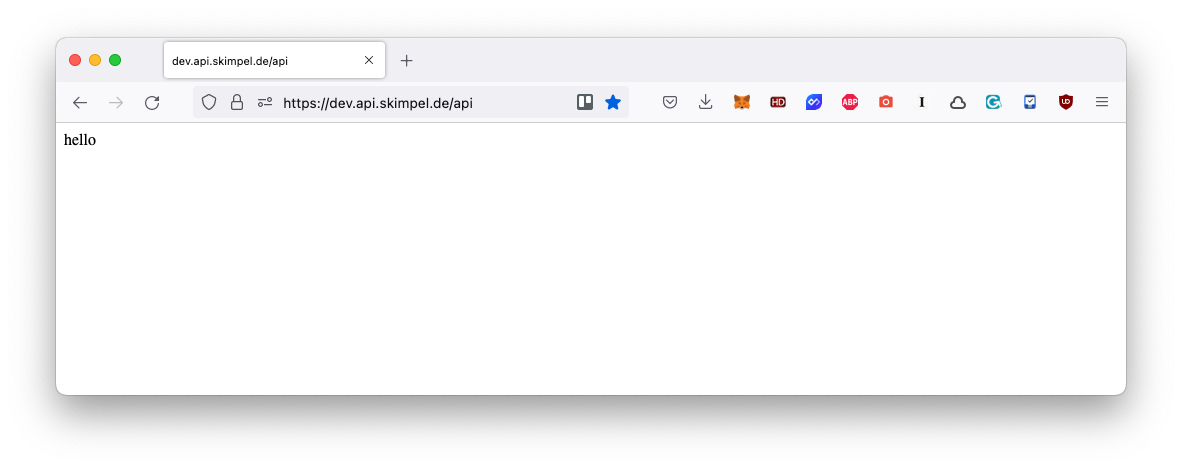How to add SSL certificate to EC2 Instance
This is what we want to achive.
NestJS app lives on AWS EC2 Instance and listening on port 3000.
Wenn the browser sends a HTTP request we want automaticaly forwarding to port 3000.
Also we want to use secure connection (HTTPS or SSL)
0. In this tutorial we will:
- Install NGNIX 1 on EC2 Instanse
- Change configuration of the NGNIX to forward all requests from port 80 to NestJS app on port 3000
- Install Cerbot 2
- Configure Cerbot
- Get a Let’s Encrypt 3 certificate
- Enjoying website with SSL
1. Step
1sudo apt install nginx
Open NGNIX configuration file
1sudo nano ~/etc/nginx/sites-available/default
And add this settings.
1 server_name dev.api.skimpel.de www.dev.api.slimpel.de; #Your domain name
2
3 location / {
4 proxy_pass http://localhost:3000; # NestJS API port
5 proxy_http_version 1.1;
6 proxy_set_header Upgrade $http_upgrade;
7 proxy_set_header Connection 'upgrade';
8 proxy_set_header Host $host;
9 proxy_cache_bypass $http_upgrade;
10 }
Important! Don’t forget to add ports 443 and 3000 in your EC2 security group -> inbound rules

Save file and restart NGNIX
1sudo service nginx restart
2. Step
Install Cerbot. Here is very nice site with instructions.
1#Installing snapd proccess depends on your OS. Please visit the link above.
2#Further instruction is relevant for Ubuntu 22.04 LTS
3
4#Ensure that your version of snapd is up to date
5sudo snap install core; sudo snap refresh core
6
7#Remove certbot-auto and any Certbot OS packages
8sudo apt-get remove certbot
9
10#Install Certbot
11sudo snap install --classic certbot
12
13#Prepare the Certbot command
14sudo ln -s /snap/bin/certbot /usr/bin/certbot
15
16#Choose how you'd like to run Certbot
17sudo certbot --nginx
After successfully received certificate you should get the following message:
… Successfully received certificate. Certificate is saved at: /etc/letsencrypt/live/dev.api.skimpel.de/fullchain.pem Key is saved at: /etc/letsencrypt/live/dev.api.skimpel.de/privkey.pem This certificate expires on 2022-12-17. These files will be updated when the certificate renews. Certbot has set up a scheduled task to automatically renew this certificate in the background.
Deploying certificate Successfully deployed certificate for dev.api.skimpel.de to /etc/nginx/sites-enabled/default Successfully deployed certificate for www.dev.api.skimpel.de to /etc/nginx/sites-enabled/default Congratulations! You have successfully enabled HTTPS on https://dev.api.skimpel.de and https://www.dev.api.skimpel.de …
1#Test automatic renewal
2#The Certbot packages on your system come with a cron job or systemd timer that will renew your certificates automatically before they expire.
3#You will not need to run Certbot again, unless you change your configuration. You can test automatic renewal for your certificates by running this command:
4sudo certbot renew --dry-run
3. Step 😁

If you need more info about EC2 configuration please contact me at bonaparteit@gmail.com
Usefull links: How To Deploy Your Node.js App On AWS With NGINX And SSL
-
Nginx is a web server that can also be used as a reverse proxy, load balancer, mail proxy and HTTP cache. ↩︎
-
Certbot is a free, open source software tool for automatically using Let’s Encrypt certificates on manually-administrated websites to enable HTTPS. ↩︎
-
Let’s Encrypt is a free, automated, and open certificate authority (CA), run for the public’s benefit. ↩︎